If you keep chickens as pets, it’s important to know what to do if your chicken is attacked by a cat. Cats are natural predators of chickens and can kill them very quickly. In this blog post, I will recommend what to do if one of your chickens is attacked by a cat and what to expect in the process of caring for your injured chicken.
Recently, a cat showed up and attacked the weakest of my flock of three bantam chickens. By the time I went outside to check on the commotion, it was too late. The cat was running away with my hen, Nugget, in its mouth. At the time I thought it was probably too late, I lost a young rooster to a feral cat years ago and it was a quick death as it got him by the neck. I gave chase and the cat dropped Nugget in the drain, before escaping. It was trying to get away fast and it wasn’t able to fit her through the hole.
Nugget was in shock and tilted her head up to breathe. I carried her to a quiet spot to catch her breath and saw that she had a couple of wounds on her back. After around 10 minutes, she stood up and wanted to join the rest of the flock but I put her in the coop for observation. I immediately left some food out for her and she still had a good appetite, which was a relief. However, she mainly stood around and was withdrawn, she also looked like she had some difficulty walking. The next day, my brother and I took her to the vet – AAVC in Yishun- (our regular vet, Gloria Lee of Mount Pleasant in Yishun, was on 3 weeks leave) and discovered that it was worse than we thought.
From my experience I recommend the following:
1. Get your chicken to a vet ASAP
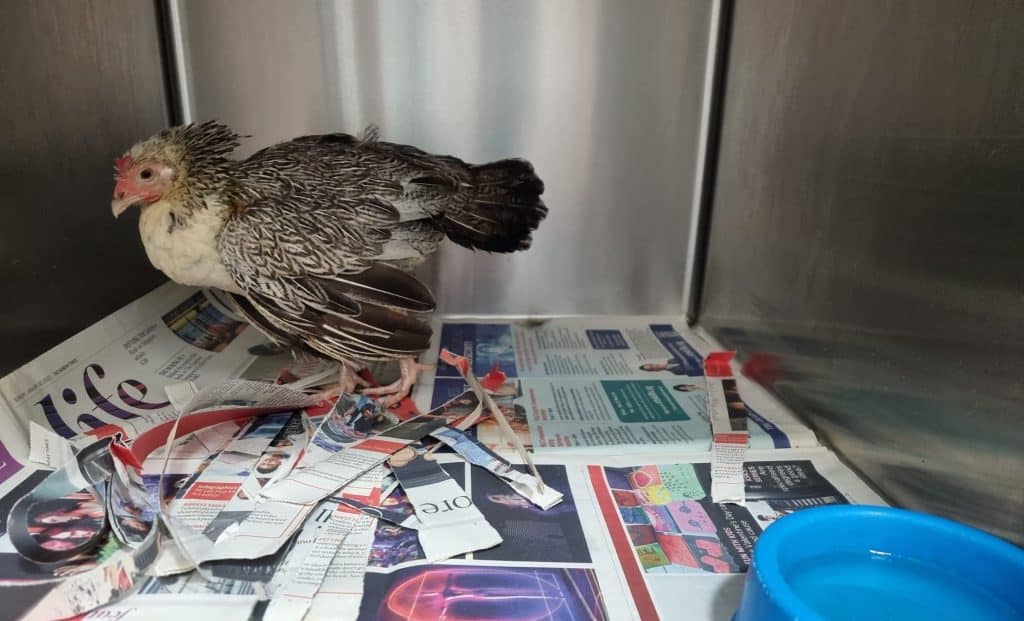
First of all, it’s important to act quickly if your chicken is attacked by a cat. Cats have toxic saliva and bites can result in infections and kill your chicken. A cat attack requires emergency care and will need to see a vet. It is a good idea to inspect your chicken to try to get an accurate assessment of how serious the injury is.
Before you get your chicken to the vet, clean the wounds to reduce any chance of an infection. If you do not have F10 disinfectant (requires dilution) or saline solution on hand, you can try posting an SOS to Facebook or Telegram on channels like Backyard Chickens Singapore (BYCS) or Save the Chickenese Singapore to find out if there is someone in your neighbourhood whom you can get it from immediately.
When we brought Nugget to the vet for a professional assessment, we were told that she required 2 stitches, one of them was pretty major. The vet and assistant plucked the feathers around her major wound, and then stitched her up. The vet said that he could not put her under general anaesthetic because it’s risky administering that type of anaesthetic to a chicken, instead he said he would conduct the procedure under local anaesthetic. Unfortunately, they also found a bite mark on the underside of her body, and I believe that was one of the reasons why she barely sat down for 5 days.
They kept her for a night (see pic above) and we collected her the following day. Her wings were hanging down in this manner for at least a week. We were asked to bring her back in two weeks to get her stitches out.
This initial visit was quite expensive because we also discovered that she had a lump near her vent and sent her for an ultrasound. Including medication, the bill came up to around $600.
She also seemed to have injured her foot, and as I mentioned earlier, stood for most of 5 days, even sleeping while standing. Fortunately, she began sitting down most of the time after that.
[Trigger warning: I am about to show some graphic images of Nugget’s wounds]
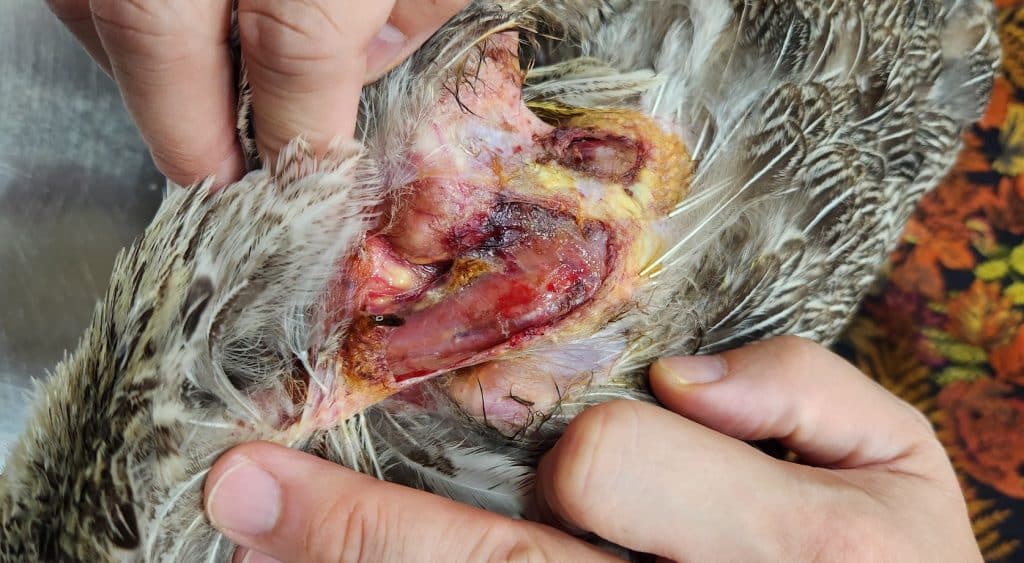
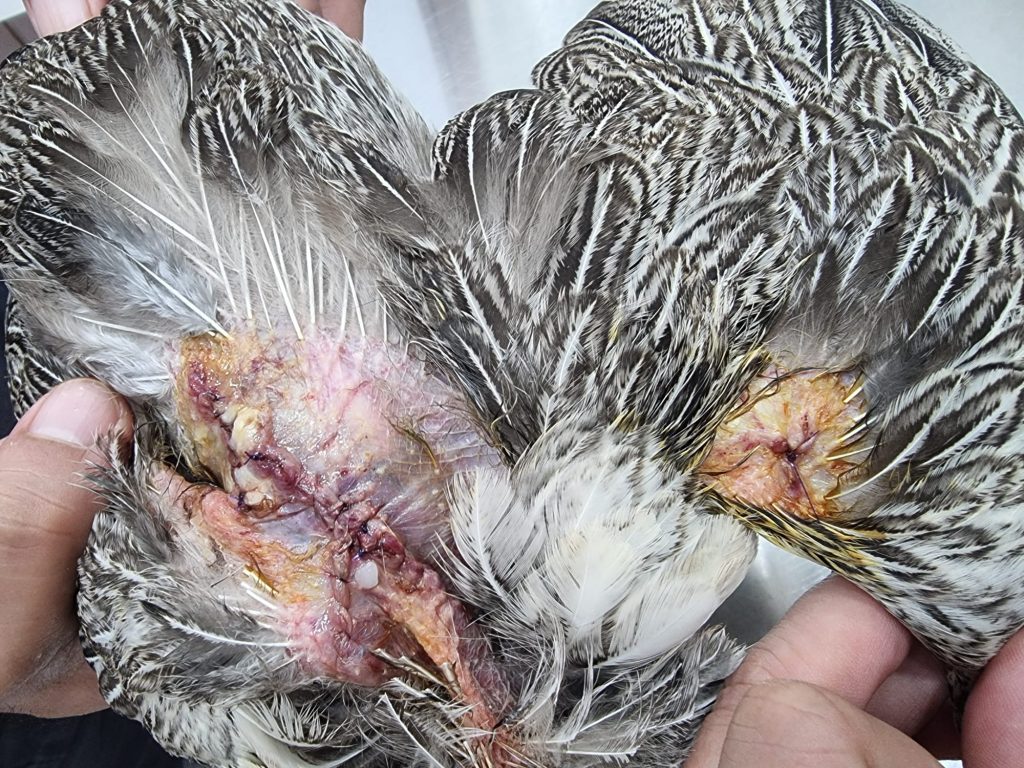
2. Administer medication and clean wounds
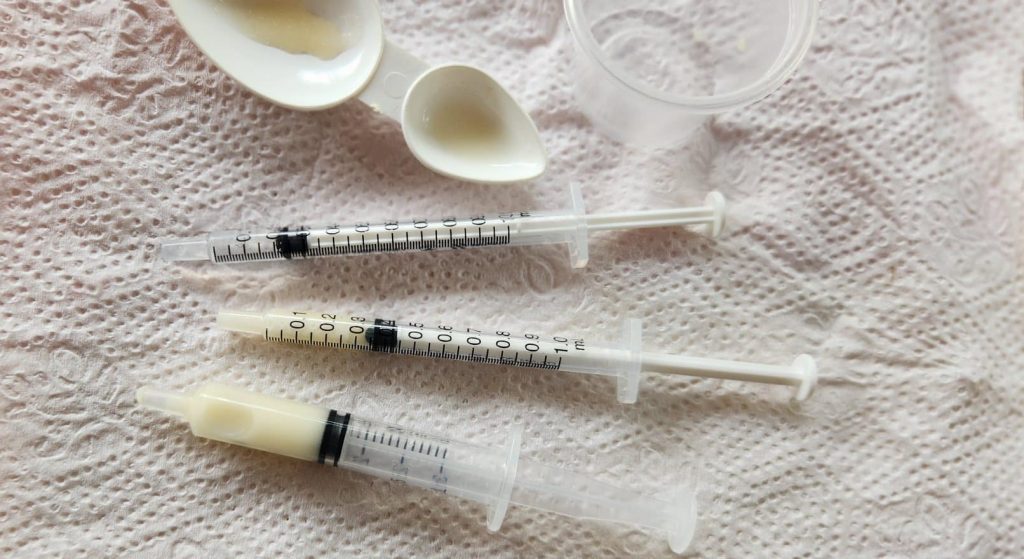
Nugget was given 5 types of medication:
– F10 disinfectant to clean her wounds twice daily,
– 100ml antibiotics thrice daily for three weeks, to be given around the same time each day, after food
– Meloxicam, an anti inflammatory for the first 5 days,
– Beaufort for the first 4 days then twice weekly
– Lactulose for the first 5 days then twice weekly.
To administer medication to your chicken, please refer to this video, which I found helpful.
In my experience, Nugget disliked force feeding via a syringe, and after two weeks she started wriggling her beak around as I fed her, which resulted in some spillage and she would even shake her head vigourously, resulting in the medication flying everywhere. It is helpful to have someone hold the chicken rather than to do it alone.
I cleaned her wounds twice daily with diluted F10, which is said not to sting. This stage is very important because applying this solution keep wounds clean and helps with recovery. As the wound slowly scabs over, the daily cleaning also helps to soften the scab so that it can gradually drop off.
3. Food Requirements
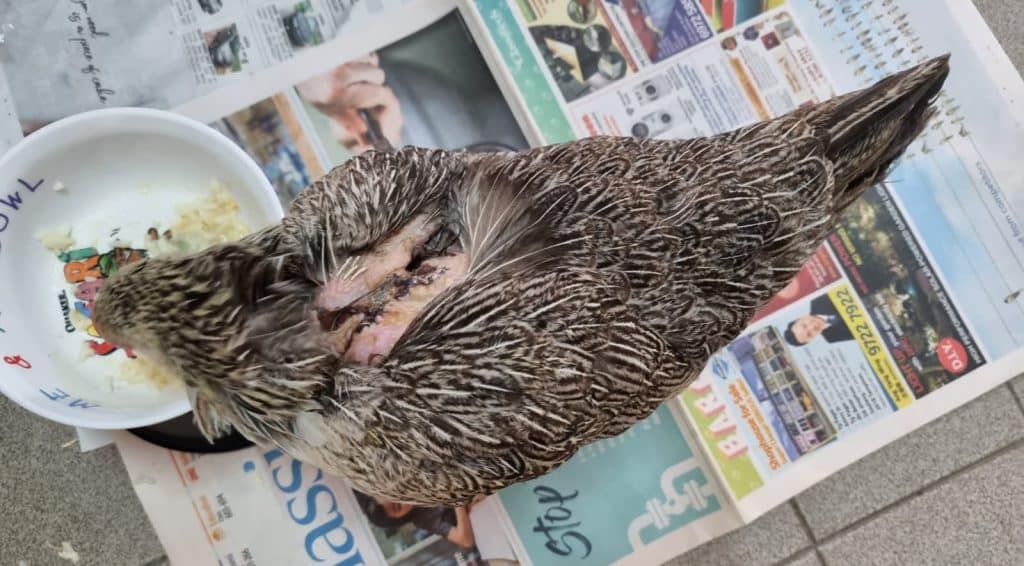
If your chicken is able to eat on its own, this is a very good sign. We purchased some Vetafarm Critta Care as contingency. It is a powder meant for reconstitution and syringe fed as nutritional support to avian creatures.
As the bite wounds and stitches were close to her neck, I elevated her food bowl so she would not need to strain her neck. I did this by stacking it on top of a food container.
In the first two weeks, we would mix it in with rice or oats but she seemed quite sick of having it with all her meals eventually. The vet suggested that we could gradually feed Nugget solid food starting with a small amount. I would also feed her corn, which I would tear into tiny pieces. We then went back to feeding her chicken feed.
4. Isolating the injured chicken
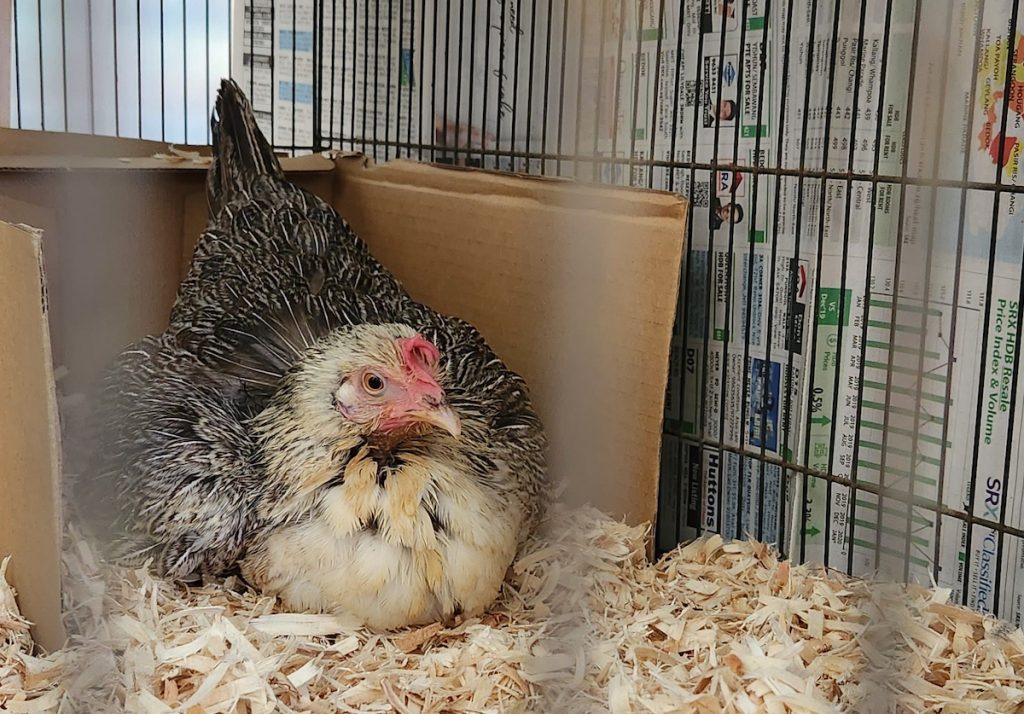
Create a safe, cosy resting area away from other chickens. When your chicken is attacked by a cat, it can feel traumatised. I once had a hen who did not want to step out of her cage for a long time. She sat in her cage a lot, resulting in her nails getting long and we had to clip them. Also, separating the injured chicken from other chickens is to avoid situations where the others may peck at the wound/s of the injured chicken. This is usually out of curiosity. If the injured chicken bleeds, the others will continue pecking at its wounds.
For a month, I kept her in a protected, covered area near the kitchen and left her food and clean water, making sure that she was safe and comfortable. For bedding, I chose aspen because I already had that lying around the house for the intention of growing mushrooms. This made it easier for me to remove her poop from the cage, and was a more convenient option instead of using newspaper.
After her stitches were removed, I put her back in the coop but segregated her from the rest. I put up a makeshift fence to keep the alpha hen from bullying Nugget but I let them run around together when I release all three of them in the garden.
5. Visit the vet for a follow up
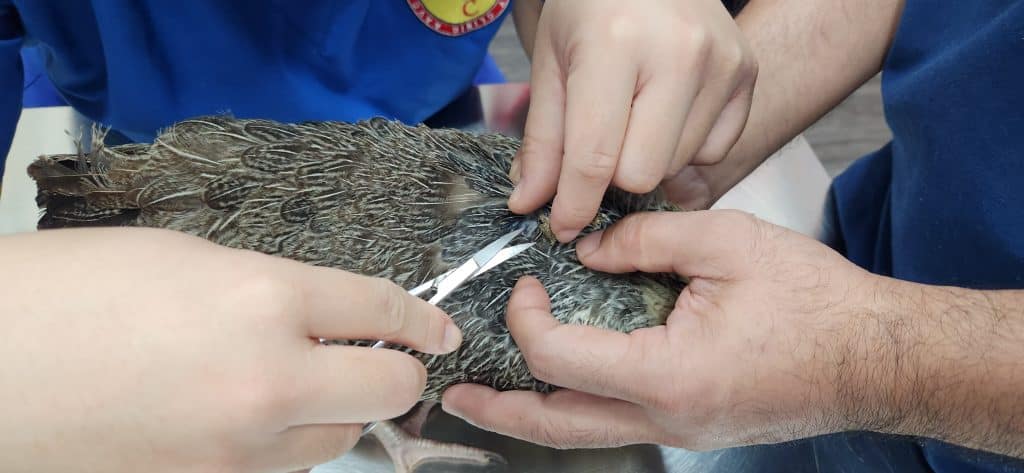
I brought her to the vet for two follow ups because her bigger wound had not fully healed. During the first follow up visit, the vet sensed that the wound still seemed a bit swollen and suggested that I come back in around 10 days. He recommended that I continue to clean the wound to soften the scab. By the time I returned, the scab had already started peeling away from the wound, and the vet removed it, along with the remaining stitches.
Not long after, I returned her to the coop and the first thing she did was to have a sand bath. This was something she could not have for a month, in case her wounds got infected as a result. She was happy to live in the coop once more, although sad to be segregated from the rooster.

I hope you find these tips and advice on what to do if your chicken is attacked by a cat useful.
For more gardening updates, follow my Facebook Page – The Tender Gardener, Instagram page @tendergardener and subscribe to my YouTube channel – The Tender Gardener.
Cover photo by Quang Nguyen Vinh, all other photos by me unless specified otherwise.

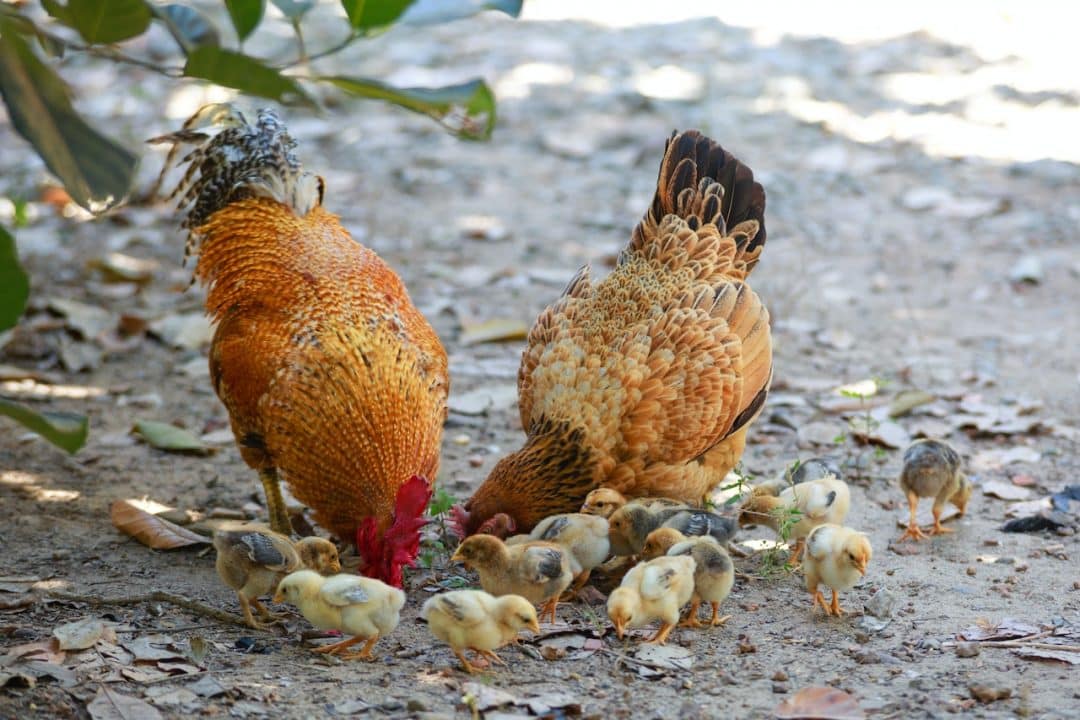

No Comments